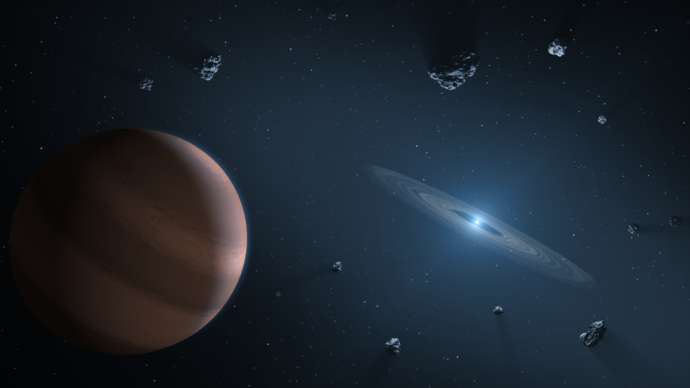Časoris is an online newspaper aimed at children. Each week we’ll take an article and post it here as a Slovene-English dual text.
V iskanju druge Zemlje
In search of another Earth
Written by Urša Adamič, translated by JL Flanner & G Translate
Koliko Zemlji podobnih planetov in Soncu podobnih zvezd je v naši galaksiji?
How many Earth-like planets and Sun-like stars are in our galaxy?
Planeti, ki za kroženje porabijo približno toliko časa kot Zemlja in ki so obenem tudi približno enako veliki kot Zemlja, se po najnovejših ugotovitvah pojavljajo v bližini vsake četrte zvezde.
Planets that spend about as much time in orbit as the Earth, and are about the same size as the Earth, seem to appear near every fourth star, according to the latest findings.
Keplerjev vesoljski teleskop, ki danes sicer ne deluje več, je od leta 2009 v Mlečni cesti iskal Zemlji podobne planete, ki krožijo okoli zvezd, podobnih Soncu.
The Kepler space telescope, which is no longer working today, searched for Earth-like planets orbiting Sun-like stars in the Milky Way since 2009.
Astronomi so z njim opazovali več kot 530 tisoč zvezd in več kot 2,500 planetov.
Astronomers observed more than 530,000 stars and more than 2,500 planets.
Pri določanju Zemlji podobnih planetov so upoštevali dve lastnosti: velikost planeta in čas, ki ga potrebuje, da obkroži svojo zvezdo.
In determining Earth-like planets, they took into account two characteristics: the size of the planet and the time it takes to orbit its star.
Ugotovili so, da je čas kroženja Zemlji podobnih planetov od 237 do 500 dni, njihova velikost pa se giblje med tremi četrtinami ter eno in pol velikosti Zemlje.
They found that the time of orbit of Earth-like planets was 237 to 500 days, with their size ranging between three-fourths and one-half that of the Earth.
Raziskovalci so želeli bolje razumeti proces nastajanja planetov in poiskati takšne, ki bi omogočali pogoje za življenje.
Researchers wanted to better understand the process of planet formation and find those that would provide living conditions.
Še posebej so se osredotočili na iskanje biomarkerjev v njihovi atmosferi, molekul, ki bi lahko nakazovale, da je na teh planetih življenje.
They were particularly focused on finding biomarkers in their atmospheres, molecules that could indicate that life is on these planets.
»Toda raziskava življenja na eksoplanetih predstavlja zahteven izziv, za katerega bo potrebna veliko obsežnejša vesoljska misija,« meni eden od vodilnih raziskovalcev Eric B. Ford.
"But exploring life on exoplanets presents a difiicult challenge that will require a much larger space mission," says one of the leading researchers, Eric B. Ford.
Zanimanje za eksoplanete, ki so podobni Zemlji, v astronomiji ni novost. Pred dvema letoma so odkrili, da se okoli majhne zvezde Trappist-1, ki je od nas oddaljena 39 svetlobnih let, vrti sedem Zemlji podobnih planetov.
The interest in Earth-like exoplanets is not new to astronomy. Two years ago, it was discovered that seven Earth-like planets revolve around the tiny star Trappist-1, 39 light-years away.
Read more stories and improve your Slovene at Časoris, while all our dual texts can be found here.






